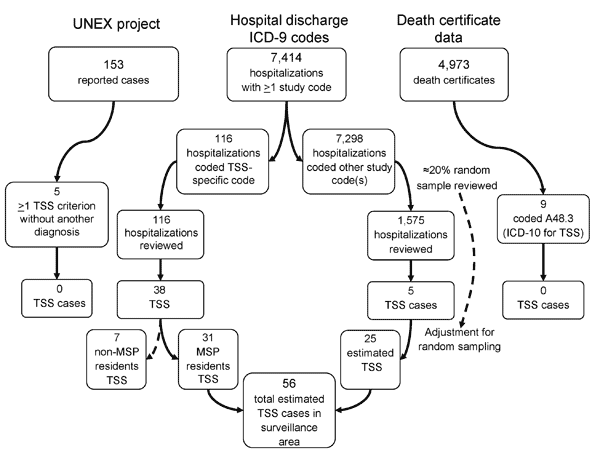Volume 15, Number 5—May 2009
Dispatch
Evaluation of Surveillance Methods for Staphylococcal Toxic Shock Syndrome
Figure

Figure. Flow diagram of toxic shock syndrome (TSS) case ascertainment. TSS cases were identified from International Classification of Diseases, 9th Revision (ICD-9), codes assigned at hospital discharge, cases reported to the Minnesota Unexplained Critical Illness and Death of Possible Infectious Etiology project (UNEX), and death certificate data by using International Classification of Diseases, 10th Revision (ICD-10), code A48.3. MSP, Minneapolis–St. Paul area.
Page created: August 13, 2024
Page updated: August 13, 2024
Page reviewed: August 13, 2024
The conclusions, findings, and opinions expressed by authors contributing to this journal do not necessarily reflect the official position of the U.S. Department of Health and Human Services, the Public Health Service, the Centers for Disease Control and Prevention, or the authors' affiliated institutions. Use of trade names is for identification only and does not imply endorsement by any of the groups named above.